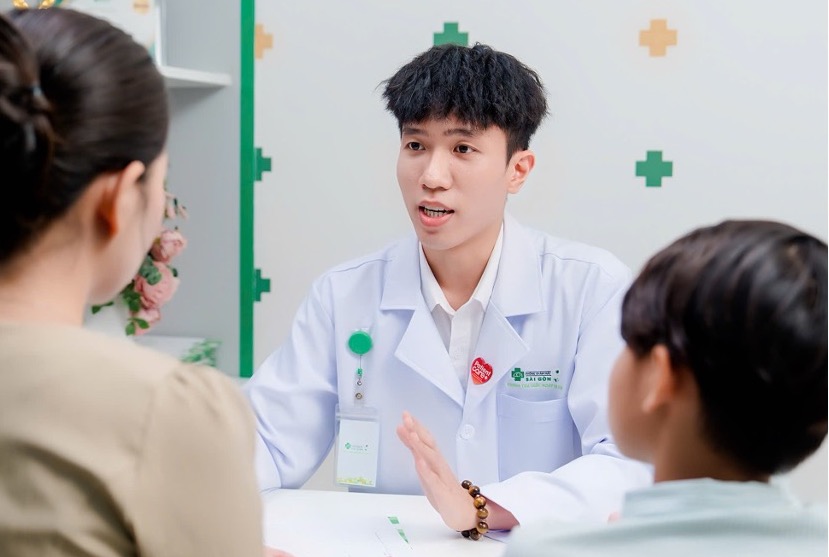"Long-standing habits and a lack of updated knowledge prevent many parents from fully understanding the risks of myopia progression and its complications," said optometrist Trang Si Tin from Sai Gon Ngo Gia Tu Eye Hospital at the Sai Gon Medical Group's scientific conference on 20/9.
A survey of over 200 parents with children aged 4 to 16 who visited the hospital for myopia consultations revealed that 20% still hold the belief that wearing glasses is enough, like adults. In reality, glasses only improve vision clarity and do not prevent myopia progression. They are not a solution for myopia management. This misconception discourages many parents from exploring other myopia control methods for their children.
The most common reason parents do not seek myopia management solutions is a lack of knowledge and access to reliable scientific information (40%). Some also express concerns about the effectiveness or potential risks of methods like eye drops, contact lenses, or optical interventions. While cost isn't the primary barrier, it still poses a challenge, particularly for options like Ortho-K or myopia control lenses.
Myopia is increasingly prevalent globally, with projections estimating that 50% of the population will be affected by 2050, including nearly one billion people with high myopia. In Vietnam, an estimated 6.7 million children (about 30%) have myopia, but the adoption rate of control measures remains below 2%.
Myopia often progresses rapidly between the ages of 4 and 16. Many children aged 8-10 already have two diopters of myopia. If it increases by about one diopter annually, it could exceed 10 diopters by age 18, increasing the risk of serious complications like retinal degeneration, retinal detachment, or glaucoma. Refractive surgery is an option after 18, but high myopia or unstable eyes may reduce the feasibility of laser intervention or even disqualify patients from surgery.
Unlike simply wearing glasses, myopia management aims to slow the abnormal elongation of the eyeball – the root cause of high myopia. Doctors develop personalized plans based on the child's degree of myopia, progression rate, biometric indicators, lifestyle, and genetic factors. Current methods include Ortho-K (orthokeratology), specialized lenses, low-dose atropine eye drops, or vision training programs.
 |
Children need regular eye exams and myopia management to prevent rapid progression. *Photo: Hospital provided* |
While the exact causes of myopia are often unclear, excessive eye strain, prolonged exposure to electronic devices, inadequate lighting, limited outdoor activities with natural light exposure, improper posture, and reading at close distances are significant contributing factors. Some cases of early-onset myopia may be hereditary.
Parents should guide their children to limit screen time, maintain proper posture while studying, and keep a reasonable distance from books. Adequate lighting during study is crucial, avoiding reading in the dark. Encouraging outdoor activities allows the eyes to relax and focus on distant objects. Diet also plays a role; incorporating nutrients beneficial for eye health, like vitamins A, C, E, and zinc, is recommended.
To reduce eye strain, children should alternate between near and far vision activities, avoiding prolonged near-focus. The 20-20-20 rule can be helpful: after every 20 minutes of studying or screen time, rest the eyes by looking at something 20 feet (6 m) away for 20 seconds, or by closing the eyes for relaxation in limited spaces.
Le Phuong












